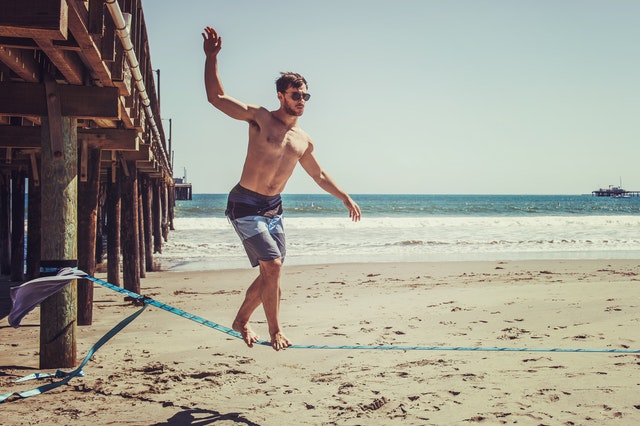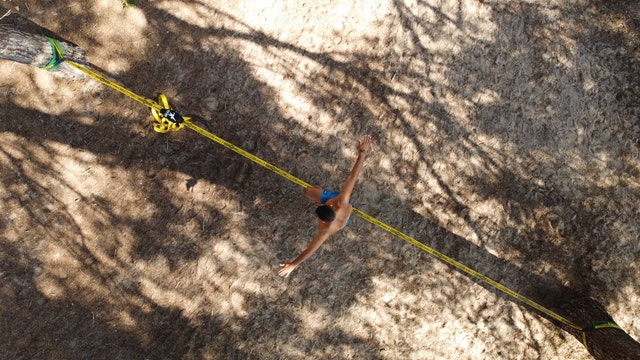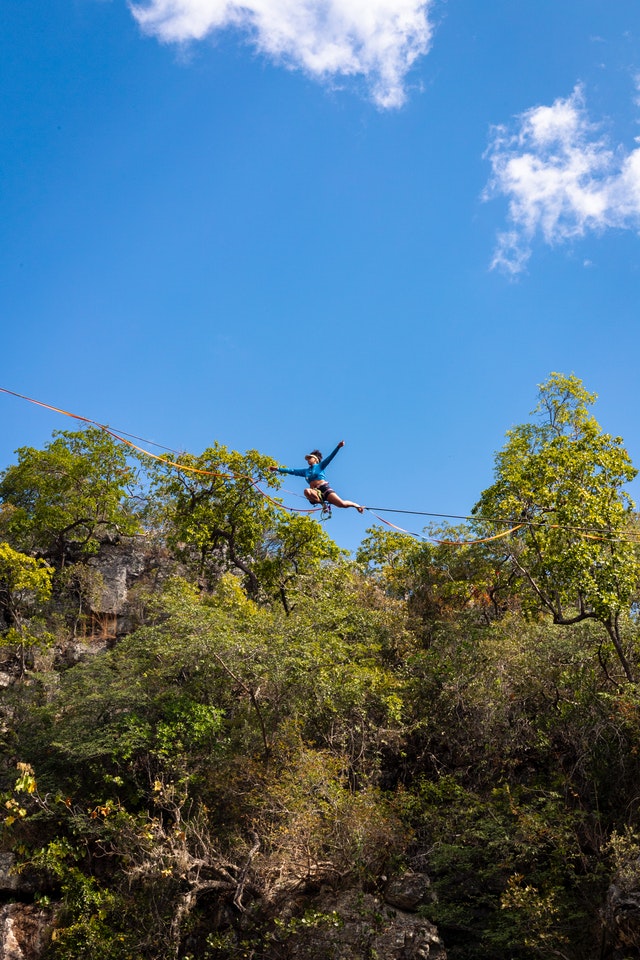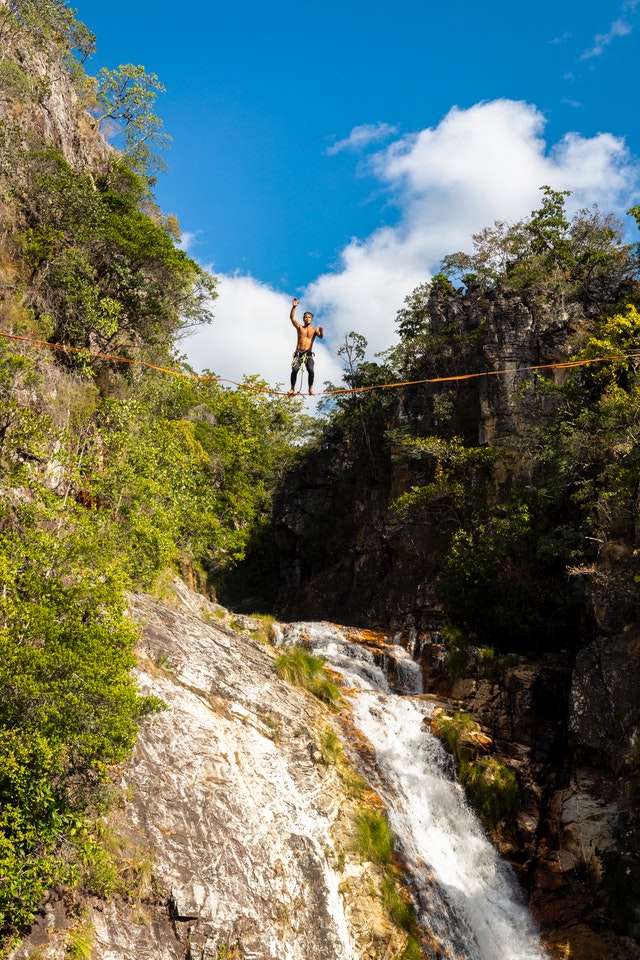A long piece of webbing stretches the span between two trees in a local park, and a young woman balances on the inches-wide material a couple of feet off the ground. The line bends slightly under her weight as she moves forward and back, at one point appearing still on a single foot. It is incredible, astonishing; it is slacklining.
Despite the reduced risk of injury, with the slackline only two to three feet off the ground, spectators cannot be
blamed for assuming the girl is a tightrope walker. While the activities are similar, slacklining is more approachable for novices and provides tremendous benefits.
Unfortunately, too many people cannot get past their nerves to try the activity. While there are risks involved with learning, you can mitigate those risks with proper planning. Using padded mats and lowering the line to a comfortable height, injuries become unlikely.
If you have ever wanted to try slacklining, what is holding you back? While it will take time to build confidence and become proficient, the benefits of the exercise make it worth the dedication.
1. Improves Balance

One of the crucial components of health and longevity is balance. People too often settle into a life of desk jobs and limited movement, resulting in worsening balance as they age. Poor balance can be a death sentence for seniors — 21% of people over 60 die within one year of a hip fracture.
Slacklining is a balancing and core strength exercise. Not only will participating in the activity result in better balance, but it will also result in improved posture and strength, enhanced athletic performance, and reduced impacts of arthritis.
2. Benefits the Brain

Many people are freaked out the minute they step on a slackline because it usually starts shaking. They immediately think they are going to fall, and many will. The key to slacklining is concentration and focus. Sure, balance has a lot to do with it, but without concentration and focus, you will fall every time.
The best part about continued slackline practice is improving your focus and concentration. The brain is like a muscle, and the more you force it to focus on an intense or strenuous activity, the better it gets. In fact, a study published in Hippocampus Magazine in August of 2011 found a direct correlation between slacklining and enhancements in the memory and learning centers of the brain.
3. Promotes Muscle Gains

As slacklining is an exercise and activity, it will lead to muscle gains. The most gains are realized in the core and lower body, which are muscle groups directly associated with balance. The benefits of slacklining are often equivalent or greater than more traditional core and lower body workouts, such as squats and sit-ups.
Many practitioners express tremendous athletic gains because slacklining focuses on the core, gluteals, and quads. Think about it, every sport requires some level of balance, and slacklining is the best balancing exercise.
4. Improves Self-Esteem and Confidence

Slacklining is more than an exercise; it is potentially a life-changing experience. The amount of focus and dedication required to become proficient with the activity can often alter one's outlook.
Challenging yourself and exceeding your expectations or even meeting them is a tremendous confidence boost. Many people find that commitment and improvement on the slackline directly correlate to feelings of self-esteem and confidence.
What's your take on slacklining? Do you think you will ever give it a try?

